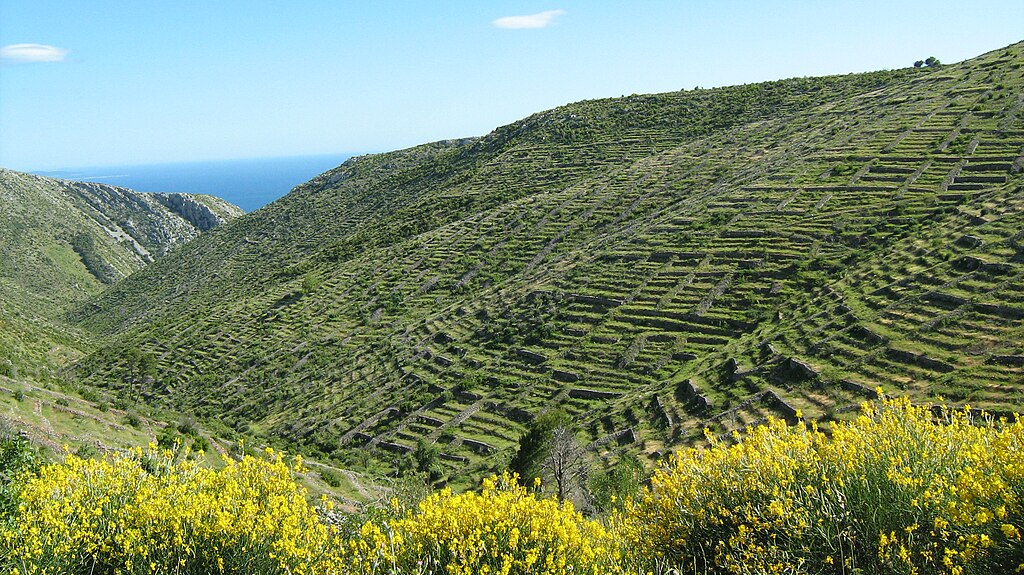It’s easy to learn a language when your feet are on the ground. For the first time in many visits to Croatia, my hit-and-miss efforts to grasp the language are bearing fruit. Croatian has just enough similarities to Russian to have tripped me up in the past. But somehow, this time, the mist is rising.
I credit part of my progress to finding a good Croatian grammar book—one that clears things up, rather than makes them cloudier. Maybe it is just the right time for a phonetic system peppered by j’s (preijatelj = friend), r’s as a kind of vowel (trg = square in a city), and a parade of č, ć, š, and ž’s finally to settle in.

That said, the complexity of dialects still messes things up. Dialect, as a distinguishing factor in American English, has faded since I was a child, or so it seems. We are increasingly linked to a single tone of English through media (not to mention “Hey Siri” and “Alexa!”). Perhaps it began with newsmen like Walter Cronkite whose mellifluous Midwestern voice spoke to millions every night on television. However you analyze it, we do understand each other, with few exceptions, when we drive across country, finding the remaining differences more of an interesting factor than a barrier (“Hey, you must be from New York!”).
Here in Croatia, though, dialects can undo the ear! The clip that follows will give you a sense of how drastic the conflict between Classical Croatian and dialects of specific regions, villages, or islands can be. The area in question is the island of Hvar, a blindingly gorgeous island off the coast of today’s Croatia.
There are 1000 islands within today’s Croatian borders, with maybe 67 of them having a population. Hvar is moderately populated (c. 10,000 people on an island 42 miles in length), although a carpet of vineyards and groves covers most of the island. Hvar’s economy today depends primarily on tourism, with agriculture remaining a strong factor through vineyards, olive groves, and lavender bushes.

Lavender came into cultivation after a pest known as phylloxera devastated Adriatic grapevines in the early 20th century, forcing much of the population to emigrate. Initially, the introduction of lavender in the 1920s as a substitute crop was viewed skeptically, but it grew beautifully under the Adriatic sun. Lavender from Hvar is arguably the world’s finest; the color schemes for everything from wall paint to hotel uniforms proudly proclaim that fact.
Meanwhile, back to the Croatian language. The months of the year are hard to pronounce, yet rewardingly colorful. My favorite one is March (ožujak, based in the word “lie” which, after all, is what March weather does by promising spring one week, and bringing winter back the next). I also love the word for September (listopad, literally “leaves falling”) both because of its descriptive accuracy in most places and because the words sounds cool.
Be that as it may, this short comparison between the Classical Croatian pronunciation of the months of the year and the way they come out in Hvar dialect will make my case and, hopefully, make you laugh.
I return home tomorrow and will be there a week. Yes, that’s a short time home, although enough time to do laundry and catch up. My next route sends me to Amsterdam (I’m not taking up Dutch). We will sail up the Rhine through Germany and end in Switzerland. My German is pretty good, so I don’t need to study it, plus English predominates on river ships. So, the question is, will I, or will I not, keep plodding through my Croatian grammar book?
The great thing about this book has to do with the charming ongoing narrative through the dialogues of each chapter. Long ago, when I first took up German, a set of Berlitz cassette tapes and oversized booklets operated the same way. Then, it was a delightful story of Herr Krueger, a visiting American businessman with German heritage, and Liesel, the lovely daughter of Krueger’s German business associate. They, of course, fall in love, but Krueger ends up in an automobile accident along the Autobahn, which sidelines him. In the hospital for a long while (allowing the course to introduce medical vocabulary), Krueger is unable to communicate with Liesel (remember, the era was pre-email, pre-text, and pre-cell phone). He had lost Liesel’s phone number in the aftermath of the accident, etc. etc.—no, he really had! Meanwhile, Liesel decides he was not serious and turns away. Ultimately Krueger gets out of traction, shows back up in a new rental car, makes amends, and it all ends in a wedding.
Can you believe that I still remember that story and most of the individual, formal German lines from those plastic cassettes? Yes, I really do, with enormous fondness: those lines got me going in German and have served me well! Happily, my Croatian grammar book has a similar narrative, featuring a gal from California with Croatian roots (engaged to what turns out to be a flaky guy back home) who travels to meet her Croatian cousin. He has a clever friend who will raise her spirits when the flaky guy bails on their engagement through a text message. The friend, of course, is endearing and easily becomes the new love interest. Yet since it’s the 2020s, I’m not sure if the story will end with a wedding. I hope so. Meanwhile, the trio is happily eating in a of restaurants in Zagreb, so my food vocabulary has solidified.

It’s funny how we learn. As teachers, we want to make things real for our students. We seek every way possible to enhance their understanding so that facts and concepts stick with them for the long haul. Sometimes I think technology makes teaching easier: great visuals, audio and video clips. Sometimes, though, I think that the best thing is to have an old-fashioned story that triggers the imagination, seeded with tried-and-true pedagogical principles. Furthermore, back in the days where one had solely a podium, a blackboard, and (in most places) a piano, we managed just fine, thank you. Maybe even better. Entire racks of stuff did not need to travel with us either. No laptops, no connectors, no dongles, no clickers, and no external speakers. Ahh, the mere thought of it brings a tear to my eye.
But now, I have to pack up that gear and prepare to go home. Always that makes me happy, regardless of how magical the tour, and this one has indeed been magical. Still, home is where the narrative lies. And those grandkid-characters at home are contributing their part to the narrative, hopefully, by cleaning their rooms and, maybe, even the kitchen (očisti kuhinju in Croatia, in case you are wondering).
* * *
Hank adds: In the days before laptops and connectors, Carol traveled with suitcases full of books. The memory of schlepping those through train stations and airports brings a tear to my eye.




I took Latin for one year in 9th grade. I loved Latin because our textbook was really a history book, telling the stories of life in the Roman Empire. I looked forward to interpreting each chapter. My French texts were just silly little stories, each lesson disconnected from the last and the next.
So inspiring, as always! Thank you, Professor Carol — and Hank!
I too did those Berlitz tapes and then went on to German classes in a Junior College, a third year of Conversation and Advanced Grammar at a four year college and finally to the Goethe Institute in Rothenberg ob der Tauber, celebrating my 50th birthday at King Ludwig’s Castle that year. so exciting to learn a new language as an adult! And all of the above before the internet so that enrollment and payment was all done by mail.
So true–a Latin book cannot help but be a history book! And Pam, did you really have the same set? Herr Krueger and Lisel? Oh, how I wish I could find that set again. I still have a few part of it, a cassette here, a booklet there.